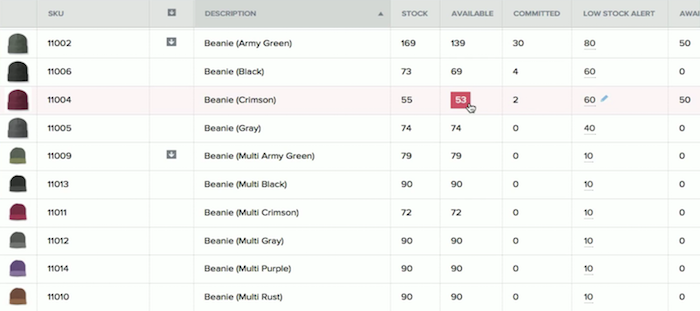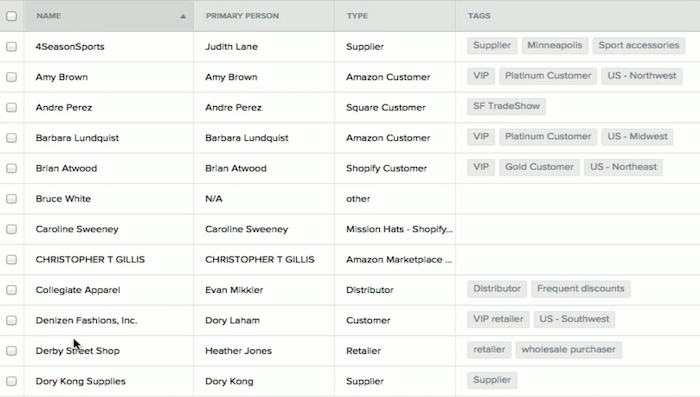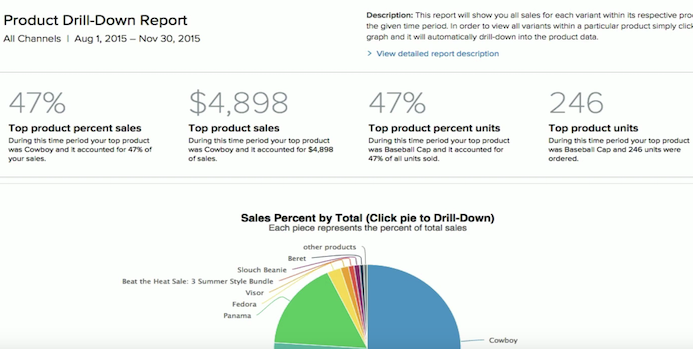Solving Omnichannel Inventory Management with Stitch Labs
The Harvard Business Review kicked off 2017 with an era-defining headline: Study of 46,000 Shoppers Shows that Omnichannel Retailing Works. Customers love omnichannel. When a merchant sells through “all channels” — brick and mortar, online, mobile, wholesale, etc. — shoppers get to purchase whenever, wherever, and however they want.
But how well does omnichannel work for retailers? As customers demand maximum convenience, how do stores keep up? The answers lie in merchants’ ability to manage and plan their inventory. To help our clients optimize this process, let us introduce Stitch Labs.
Stitch Labs is the creator of a comprehensive app that syncs retail inventory across channels, allowing for much greater clarity in inventory management and planning. During a recent retail panel talk in New York, Thomas Marks from Stitch said it best, “For retailers, the largest capital investment is inventory.” Thus, agile operations for inventory management and fulfillment are vital.
Related: Buying Furniture Online: A Retail Industry Transitions
Left to right: Megan Lierley/Stitch; Mark May/Bloom Baby; Adam Erickson/Lemonade NY; Thomas Marks/Stitch; Mary Saunders/CERCI. Photo by @MacKing.

Wholesale vs. Retail Landscape is Shifting
The panel noted a recent trend in which retailers are starting as wholesale companies and then transitioning to more direct to consumer selling. It used to be that you could “get into Bergdorf Goodman and be done,” but that is no longer the case. In the age of omnichannel, the onus is now on brands to connect with consumers. As Mary Saunders said, “Retailers have to take responsibility to reach customers however they can.”
Mark May shared Bloom Baby‘s path to date. The company was founded about 10 years ago by four Dads who had recently started families. For the first eight years, they were exclusively a wholesale business. From that experience, he derived his main message on wholesale: choose your partners well. Everyone around him nodded in agreement, and the group had a couple of reasons for this.
- It can take up to 90 days to get paid for a wholesale shipment. It’s a long cycle. Also, retail has nearly double the profit margin of wholesale.
- Merchants have to make sure other retailers understand their product. If they don’t, customers get poor service when they try and buy your product from anyone other than you. Unless you have strong wholesale partners.
Bloom Baby on Omnichannel Inventory with Stitch
After the panel, we got to talk with Mark from Bloom Baby directly about his company’s experience with Stitch Labs. Prior to Stitch, they tried many different platforms to monitor inventory, often running 7-30 day trials for new programs. They implemented Stitch two years ago, around the same time they began their direct to consumer sales. Now he’s using Stitch on an all-day, everyday basis.
As Mark said, “We constantly have our ears and eyes open for new updates and better systems, and I’m definitely in Stitch now.”

Bloom Baby sells on Amazon, as well as through their own store on Shopify. Within their own store, they have several Shopify channels, including one for sales in the United States, and others for sales in several different European countries. They also continue to sell wholesale, and manage three warehouses.
“The thing I like most about Stitch is that it automatically integrates all our channels into one system,” he said, “Plus, I can look at segments of our inventory. For instance, I can see how many cribs sold overnight in the U.K. versus other countries in Europe.”
In Mark’s example, it’s easy to see how such an understanding of inventory could profoundly improve a company’s operations — and its bottom line. But how does Stitch work on the backend?
An Inventory Dashboard for All Sales, All Channels
In Stitch Labs’ product overview, they make an appealing offer: “With Stitch, you can create it so your entire team has one source of truth.” That is, everyone in your company can share the same, up-to-date inventory information. For every product – and its variants – Stitch shows the inventory in these categories:
- Stock: The number of products originally ordered.
- Available: The number of products available to sell right now.
- Committed: The number of products sold and ready to ship.
- Awaiting: The number of products that are incoming, e.g. how many products have been ordered from suppliers to replenish stock.
Furthermore, as Mark described, this information can be easily viewed by sales channel — Amazon vs. retail store vs online store, for example. After every sale, Stitch pushes updated product availability to all channels. And the program syncs every 10 minutes.
Stitch also allows retailers to set a low inventory threshold, so they never have to run out of an item again. Here’s a screencap of that this looks like; in this scenario, a merchant has set the inventory alert at 60 units for the crimson beanie. There are currently 53 available, so the seller knows to order more now.

In his customer testimonial, Mark Hansen of Topo Designs, maker of clothing and bags for the outdoor lifestyle, says tools like the Low Inventory Alert solved his company’s “crisis of inventory.” He was always wondering how much inventory was sitting in his warehouses, and whether the company was over-selling or underselling. Now Stitch “has become the brain for all that.”
Another story from Brad Westerop, CEO of Bedface, a bed linens company, tells how Stitch helps them manage inventory that customers can order in up to 24 million variants.
Stitch: Every Sale Creates a Customer Contact
Not only does Stitch help retailers manage what they sell, it also helps them understand to whom they sell. Stitch automatically creates a customer contact from every sale through an integrated channel. As a result, when a customer calls a merchant who uses Stitch, the merchant is able to quickly look up the sale and view its status – billed, shipped, etc.

The Stitch database is also customizable. It allows for easy tagging and categorizing. Imagine what this database snapshot would look like for your business:

In the case of Chubbies, sellers of causal wear a.k.a. “purveyors of the weekend lifestyle,” they used their customer database to bolster their brand loyalty program. They have an enthusiastic shopper base, with lots of repeat buyers. Powered by Stitch, they are now able to hold an order, determine and include the best loyalty gift for a specific customer, and then set the order to ship.
Analytics & Integrations
With all the information Stitch compiles about a retailer’s business, the program then becomes a robust planning tool. Merchants can develop strategies for their top buyers, most profitable sales channels, and best selling product variants — just to name a few ideas.
Here’s a sample product report for a brand that sells headwear. Note that their top seller is the cowboy hat – it’s 47% of their sales.

There are also several ways to view the Average Unit Cost in Stitch, so merchants are able to easily understand the profit on every product. So, for example, if cowboy hats are flying out of the store, yet the business isn’t bringing in sufficient revenue, then it could be time to raise the price on this best seller. Stitch illuminates this kind of invaluable information.
Stitch integrates with the top tools of ecommerce. It works with all the popular platforms, such as Shopify, Magento, and Woo Commerce, as well as a wide spectrum of third-party applications. Retailers can also bring outside solutions for payment, shipping, accounting, and more into the program.
Working with Stitch can fundamentally change business operations. For Bloom Baby, around the time they started selling through their own online store and onboarded with Stitch, in 2015, they stopped using dropshipping. “We struggled with dropshipping because it was a middleman in the communication with our customers. It was a tough decision, but our goal now is to connect more directly with our customers,” Mark explains.
What are your business goals? Command C works with the leading-edge tools for modern business. We’d love to talk about the best path forward for your company.
